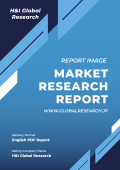1. Executive Summary
1.1. Global Market Outlook
1.2. Demand-side Trends
1.3. Supply-side Trends
1.4. Technology Roadmap Analysis
1.5. Analysis and Recommendations
2. Market Overview
2.1. Market Coverage / Taxonomy
2.2. Market Definition / Scope / Limitations
3. Market Background
3.1. Market Dynamics
3.1.1. Drivers
3.1.2. Restraints
3.1.3. Opportunity
3.1.4. Trends
3.2. Scenario Forecast
3.2.1. Demand in Optimistic Scenario
3.2.2. Demand in Likely Scenario
3.2.3. Demand in Conservative Scenario
3.3. Opportunity Map Analysis
3.4. Investment Feasibility Matrix
3.5. Value Chain Analysis
3.5.1. Profit Margin Analysis
3.5.2. Service Providers
3.6. PESTLE and Porter’s Analysis
3.7. Regulatory Landscape
3.7.1. By Key Regions
3.7.2. By Key Countries
3.8. Regional Parent Market Outlook
4. Global Mesenchymal Stem Cells Market Analysis 2017-2021 and Forecast, 2022-2032
4.1. Historical Market Size Value (US$ Bn) Analysis, 2017-2021
4.2. Current and Future Market Size Value (US$ Bn) Projections, 2022-2032
4.2.1. Y-o-Y Growth Trend Analysis
4.2.2. Absolute $ Opportunity Analysis
5. Global Mesenchymal Stem Cells Market Analysis 2017-2021 and Forecast 2022-2032, By Component
5.1. Introduction / Key Findings
5.2. Historical Market Size Value (US$ Bn) Analysis By Component, 2017-2021
5.3. Current and Future Market Size Value (US$ Bn) Analysis and Forecast By Component, 2022-2032
5.3.1. Product
5.3.1.1. Workflow Type
5.3.1.2. Product Type
5.3.2. Service
5.4. Y-o-Y Growth Trend Analysis By Component, 2017-2021
5.5. Absolute $ Opportunity Analysis By Component, 2022-2032
6. Global Mesenchymal Stem Cells Market Analysis 2017-2021 and Forecast 2022-2032, By Type
6.1. Introduction / Key Findings
6.2. Historical Market Size Value (US$ Bn) Analysis By Type, 2017-2021
6.3. Current and Future Market Size Value (US$ Bn) Analysis and Forecast By Type, 2022-2032
6.3.1. Autologous
6.3.2. Allogeneic
6.4. Y-o-Y Growth Trend Analysis By Type, 2017-2021
6.5. Absolute $ Opportunity Analysis By Type, 2022-2032
7. Global Mesenchymal Stem Cells Market Analysis 2017-2021 and Forecast 2022-2032, By Source of Isolation
7.1. Introduction / Key Findings
7.2. Historical Market Size Value (US$ Bn) Analysis By Source of Isolation, 2017-2021
7.3. Current and Future Market Size Value (US$ Bn) Analysis and Forecast By Source of Isolation, 2022-2032
7.3.1. Bone Marrow
7.3.2. Cord Blood
7.3.3. Peripheral Blood
7.3.4. Fallopian Tube
7.3.5. Fetal Liver
7.3.6. Lung
7.3.7. Adipose Tissues
7.4. Y-o-Y Growth Trend Analysis By Source of Isolation, 2017-2021
7.5. Absolute $ Opportunity Analysis By Source of Isolation, 2022-2032
8. Global Mesenchymal Stem Cells Market Analysis 2017-2021 and Forecast 2022-2032, By Indication
8.1. Introduction / Key Findings
8.2. Historical Market Size Value (US$ Bn) Analysis By Indication , 2017-2021
8.3. Current and Future Market Size Value (US$ Bn) Analysis and Forecast By Indication , 2022-2032
8.3.1. Bone And Cartilage Repair
8.3.2. Cardiovascular Disease
8.3.3. Inflammatory And Immunological Diseases
8.3.4. Liver Diseases
8.3.5. Cancer
8.3.6. GvHD
8.3.7. Other Indications
8.4. Y-o-Y Growth Trend Analysis By Indication , 2017-2021
8.5. Absolute $ Opportunity Analysis By Indication , 2022-2032
9. Global Mesenchymal Stem Cells Market Analysis 2017-2021 and Forecast 2022-2032, By Region
9.1. Introduction
9.2. Historical Market Size Value (US$ Bn) Analysis By Region, 2017-2021
9.3. Current Market Size Value (US$ Bn) Analysis and Forecast By Region, 2022-2032
9.3.1. North America
9.3.2. Latin America
9.3.3. Europe
9.3.4. Asia Pacific
9.3.5. MEA
9.4. Market Attractiveness Analysis By Region
10. North America Mesenchymal Stem Cells Market Analysis 2017-2021 and Forecast 2022-2032, By Country
10.1. Historical Market Size Value (US$ Bn) Trend Analysis By Market Taxonomy, 2017-2021
10.2. Market Size Value (US$ Bn) Forecast By Market Taxonomy, 2022-2032
10.2.1. By Country
10.2.1.1. Value (US$ Bn)ed States
10.2.1.2. Canada
10.2.2. By Component
10.2.3. By Type
10.2.4. By Source of Isolation
10.2.5. By Indication
10.3. Market Attractiveness Analysis
10.3.1. By Country
10.3.2. By Component
10.3.3. By Type
10.3.4. By Source of Isolation
10.3.5. By Indication
10.4. Key Takeaways
11. Latin America Mesenchymal Stem Cells Market Analysis 2017-2021 and Forecast 2022-2032, By Country
11.1. Historical Market Size Value (US$ Bn) Trend Analysis By Market Taxonomy, 2017-2021
11.2. Market Size Value (US$ Bn) Forecast By Market Taxonomy, 2022-2032
11.2.1. By Country
11.2.1.1. Brazil
11.2.1.2. Mexico
11.2.1.3. Rest of Latin America
11.2.2. By Component
11.2.3. By Type
11.2.4. By Source of Isolation
11.2.5. By Indication
11.3. Market Attractiveness Analysis
11.3.1. By Country
11.3.2. By Component
11.3.3. By Type
11.3.4. By Source of Isolation
11.3.5. By Indication
11.4. Key Takeaways
12. Europe Mesenchymal Stem Cells Market Analysis 2017-2021 and Forecast 2022-2032, By Country
12.1. Historical Market Size Value (US$ Bn) Trend Analysis By Market Taxonomy, 2017-2021
12.2. Market Size Value (US$ Bn) Forecast By Market Taxonomy, 2022-2032
12.2.1. By Country
12.2.1.1. Germany
12.2.1.2. U.K.
12.2.1.3. France
12.2.1.4. Spain
12.2.1.5. Italy
12.2.1.6. Russia
12.2.1.7. Rest of Europe
12.2.2. By Component
12.2.3. By Type
12.2.4. By Source of Isolation
12.2.5. By Indication
12.3. Market Attractiveness Analysis
12.3.1. By Country
12.3.2. By Component
12.3.3. By Type
12.3.4. By Source of Isolation
12.3.5. By Indication
12.4. Key Takeaways
13. Asia Pacific Mesenchymal Stem Cells Market Analysis 2017-2021 and Forecast 2022-2032, By Country
13.1. Historical Market Size Value (US$ Bn) Trend Analysis By Market Taxonomy, 2017-2021
13.2. Market Size Value (US$ Bn) Forecast By Market Taxonomy, 2022-2032
13.2.1. By Country
13.2.1.1. China
13.2.1.2. Japan
13.2.1.3. India
13.2.1.4. South Korea
13.2.1.5. Australia
13.2.1.6. Rest of APAC
13.2.2. By Component
13.2.3. By Type
13.2.4. By Source of Isolation
13.2.5. By Indication
13.3. Market Attractiveness Analysis
13.3.1. By Country
13.3.2. By Component
13.3.3. By Type
13.3.4. By Source of Isolation
13.3.5. By Indication
13.4. Key Takeaways
14. MEA Mesenchymal Stem Cells Market Analysis 2017-2021 and Forecast 2022-2032, By Country
14.1. Historical Market Size Value (US$ Bn) Trend Analysis By Market Taxonomy, 2017-2021
14.2. Market Size Value (US$ Bn) Forecast By Market Taxonomy, 2022-2032
14.2.1. By Country
14.2.1.1. South Africa
14.2.1.2. Saudi Arabia
14.2.1.3. UAE
14.2.1.4. Israel
14.2.1.5. Rest of MEA
14.2.2. By Component
14.2.3. By Type
14.2.4. By Source of Isolation
14.2.5. By Indication
14.3. Market Attractiveness Analysis
14.3.1. By Country
14.3.2. By Component
14.3.3. By Type
14.3.4. By Source of Isolation
14.3.5. By Indication
14.4. Key Takeaways
15. Key Countries Mesenchymal Stem Cells Market Analysis
15.1. Value (US$ Bn)ed States
15.1.1. Pricing Analysis
15.1.2. Market Share Analysis, 2021
15.1.2.1. By Component
15.1.2.2. By Type
15.1.2.3. By Source of Isolation
15.1.2.4. By Indication
15.2. Canada
15.2.1. Pricing Analysis
15.2.2. Market Share Analysis, 2021
15.2.2.1. By Component
15.2.2.2. By Type
15.2.2.3. By Source of Isolation
15.2.2.4. By Indication
15.3. Brazil
15.3.1. Pricing Analysis
15.3.2. Market Share Analysis, 2021
15.3.2.1. By Component
15.3.2.2. By Type
15.3.2.3. By Source of Isolation
15.3.2.4. By Indication
15.4. Mexico
15.4.1. Pricing Analysis
15.4.2. Market Share Analysis, 2021
15.4.2.1. By Component
15.4.2.2. By Type
15.4.2.3. By Source of Isolation
15.4.2.4. By Indication
15.5. Germany
15.5.1. Pricing Analysis
15.5.2. Market Share Analysis, 2021
15.5.2.1. By Component
15.5.2.2. By Type
15.5.2.3. By Source of Isolation
15.5.2.4. By Indication
15.6. U.K.
15.6.1. Pricing Analysis
15.6.2. Market Share Analysis, 2021
15.6.2.1. By Component
15.6.2.2. By Type
15.6.2.3. By Source of Isolation
15.6.2.4. By Indication
15.7. France
15.7.1. Pricing Analysis
15.7.2. Market Share Analysis, 2021
15.7.2.1. By Component
15.7.2.2. By Type
15.7.2.3. By Source of Isolation
15.7.2.4. By Indication
15.8. Spain
15.8.1. Pricing Analysis
15.8.2. Market Share Analysis, 2021
15.8.2.1. By Component
15.8.2.2. By Type
15.8.2.3. By Source of Isolation
15.8.2.4. By Indication
15.9. Italy
15.9.1. Pricing Analysis
15.9.2. Market Share Analysis, 2021
15.9.2.1. By Component
15.9.2.2. By Type
15.9.2.3. By Source of Isolation
15.9.2.4. By Indication
15.10. Russia
15.10.1. Pricing Analysis
15.10.2. Market Share Analysis, 2021
15.10.2.1. By Component
15.10.2.2. By Type
15.10.2.3. By Source of Isolation
15.10.2.4. By Indication
15.11. China
15.11.1. Pricing Analysis
15.11.2. Market Share Analysis, 2021
15.11.2.1. By Component
15.11.2.2. By Type
15.11.2.3. By Source of Isolation
15.11.2.4. By Indication
15.12. Japan
15.12.1. Pricing Analysis
15.12.2. Market Share Analysis, 2021
15.12.2.1. By Component
15.12.2.2. By Type
15.12.2.3. By Source of Isolation
15.12.2.4. By Indication
15.13. India
15.13.1. Pricing Analysis
15.13.2. Market Share Analysis, 2021
15.13.2.1. By Component
15.13.2.2. By Type
15.13.2.3. By Source of Isolation
15.13.2.4. By Indication
15.14. South Korea
15.14.1. Pricing Analysis
15.14.2. Market Share Analysis, 2021
15.14.2.1. By Component
15.14.2.2. By Type
15.14.2.3. By Source of Isolation
15.14.2.4. By Indication
15.15. Australia
15.15.1. Pricing Analysis
15.15.2. Market Share Analysis, 2021
15.15.2.1. By Component
15.15.2.2. By Type
15.15.2.3. By Source of Isolation
15.15.2.4. By Indication
15.16. South Africa
15.16.1. Pricing Analysis
15.16.2. Market Share Analysis, 2021
15.16.2.1. By Component
15.16.2.2. By Type
15.16.2.3. By Source of Isolation
15.16.2.4. By Indication
15.17. Saudi Arabia
15.17.1. Pricing Analysis
15.17.2. Market Share Analysis, 2021
15.17.2.1. By Component
15.17.2.2. By Type
15.17.2.3. By Source of Isolation
15.17.2.4. By Indication
15.18. UAE
15.18.1. Pricing Analysis
15.18.2. Market Share Analysis, 2021
15.18.2.1. By Component
15.18.2.2. By Type
15.18.2.3. By Source of Isolation
15.18.2.4. By Indication
15.19. Israel
15.19.1. Pricing Analysis
15.19.2. Market Share Analysis, 2021
15.19.2.1. By Component
15.19.2.2. By Type
15.19.2.3. By Source of Isolation
15.19.2.4. By Indication
16. Market Structure Analysis
16.1. Competition Dashboard
16.2. Competition Benchmarking
16.3. Market Share Analysis of Top Players
16.3.1. By Regional
16.3.2. By Component
16.3.3. By Type
16.3.4. By Source of Isolation
16.3.5. By Indication
17. Competition Analysis
17.1. Competition Deep Dive
17.1.1. Thermo Fisher Scientific
17.1.1.1. Overview
17.1.1.2. Product Portfolio
17.1.1.3. Profitability by Market Segments
17.1.1.4. Sales Footprint
17.1.1.5. Strategy Overview
17.1.1.5.1. Marketing Strategy
17.1.1.5.2. Product Strategy
17.1.1.5.3. Channel Strategy
17.1.2. Cell Applications, Inc.
17.1.2.1. Overview
17.1.2.2. Product Portfolio
17.1.2.3. Profitability by Market Segments
17.1.2.4. Sales Footprint
17.1.2.5. Strategy Overview
17.1.2.5.1. Marketing Strategy
17.1.2.5.2. Product Strategy
17.1.2.5.3. Channel Strategy
17.1.3. Cyagen Biosciences
17.1.3.1. Overview
17.1.3.2. Product Portfolio
17.1.3.3. Profitability by Market Segments
17.1.3.4. Sales Footprint
17.1.3.5. Strategy Overview
17.1.3.5.1. Marketing Strategy
17.1.3.5.2. Product Strategy
17.1.3.5.3. Channel Strategy
17.1.4. Axol Biosciences Ltd.
17.1.4.1. Overview
17.1.4.2. Product Portfolio
17.1.4.3. Profitability by Market Segments
17.1.4.4. Sales Footprint
17.1.4.5. Strategy Overview
17.1.4.5.1. Marketing Strategy
17.1.4.5.2. Product Strategy
17.1.4.5.3. Channel Strategy
17.1.5. Cytori Therapeutics Inc.
17.1.5.1. Overview
17.1.5.2. Product Portfolio
17.1.5.3. Profitability by Market Segments
17.1.5.4. Sales Footprint
17.1.5.5. Strategy Overview
17.1.5.5.1. Marketing Strategy
17.1.5.5.2. Product Strategy
17.1.5.5.3. Channel Strategy
17.1.6. Stemcell Technologies Inc
17.1.6.1. Overview
17.1.6.2. Product Portfolio
17.1.6.3. Profitability by Market Segments
17.1.6.4. Sales Footprint
17.1.6.5. Strategy Overview
17.1.6.5.1. Marketing Strategy
17.1.6.5.2. Product Strategy
17.1.6.5.3. Channel Strategy
17.1.7. Celprogen Inc
17.1.7.1. Overview
17.1.7.2. Product Portfolio
17.1.7.3. Profitability by Market Segments
17.1.7.4. Sales Footprint
17.1.7.5. Strategy Overview
17.1.7.5.1. Marketing Strategy
17.1.7.5.2. Product Strategy
17.1.7.5.3. Channel Strategy
17.1.8. Brainstorm Cell Therapeutics Inc
17.1.8.1. Overview
17.1.8.2. Product Portfolio
17.1.8.3. Profitability by Market Segments
17.1.8.4. Sales Footprint
17.1.8.5. Strategy Overview
17.1.8.5.1. Marketing Strategy
17.1.8.5.2. Product Strategy
17.1.8.5.3. Channel Strategy
17.1.9. Stemedica Cell Technologies, Inc.
17.1.9.1. Overview
17.1.9.2. Product Portfolio
17.1.9.3. Profitability by Market Segments
17.1.9.4. Sales Footprint
17.1.9.5. Strategy Overview
17.1.9.5.1. Marketing Strategy
17.1.9.5.2. Product Strategy
17.1.9.5.3. Channel Strategy
17.1.10. Merck Millipore
17.1.10.1. Overview
17.1.10.2. Product Portfolio
17.1.10.3. Profitability by Market Segments
17.1.10.4. Sales Footprint
17.1.10.5. Strategy Overview
17.1.10.5.1. Marketing Strategy
17.1.10.5.2. Product Strategy
17.1.10.5.3. Channel Strategy
17.1.11. Smith & Nephew
17.1.11.1. Overview
17.1.11.2. Product Portfolio
17.1.11.3. Profitability by Market Segments
17.1.11.4. Sales Footprint
17.1.11.5. Strategy Overview
17.1.11.5.1. Marketing Strategy
17.1.11.5.2. Product Strategy
17.1.11.5.3. Channel Strategy
17.1.12. Lonza AG
17.1.12.1. Overview
17.1.12.2. Product Portfolio
17.1.12.3. Profitability by Market Segments
17.1.12.4. Sales Footprint
17.1.12.5. Strategy Overview
17.1.12.5.1. Marketing Strategy
17.1.12.5.2. Product Strategy
17.1.12.5.3. Channel Strategy
17.1.13. PromoCell GMBH
17.1.13.1. Overview
17.1.13.2. Product Portfolio
17.1.13.3. Profitability by Market Segments
17.1.13.4. Sales Footprint
17.1.13.5. Strategy Overview
17.1.13.5.1. Marketing Strategy
17.1.13.5.2. Product Strategy
17.1.13.5.3. Channel Strategy
17.1.14. Sciencell Research Laboratories
17.1.14.1. Overview
17.1.14.2. Product Portfolio
17.1.14.3. Profitability by Market Segments
17.1.14.4. Sales Footprint
17.1.14.5. Strategy Overview
17.1.14.5.1. Marketing Strategy
17.1.14.5.2. Product Strategy
17.1.14.5.3. Channel Strategy
17.1.15. American Type Culture Collection
17.1.15.1. Overview
17.1.15.2. Product Portfolio
17.1.15.3. Profitability by Market Segments
17.1.15.4. Sales Footprint
17.1.15.5. Strategy Overview
17.1.15.5.1. Marketing Strategy
17.1.15.5.2. Product Strategy
17.1.15.5.3. Channel Strategy
18. Assumptions & Acronyms Used
19. Research Methodology
❖ 免責事項 ❖
http://www.globalresearch.jp/disclaimer












